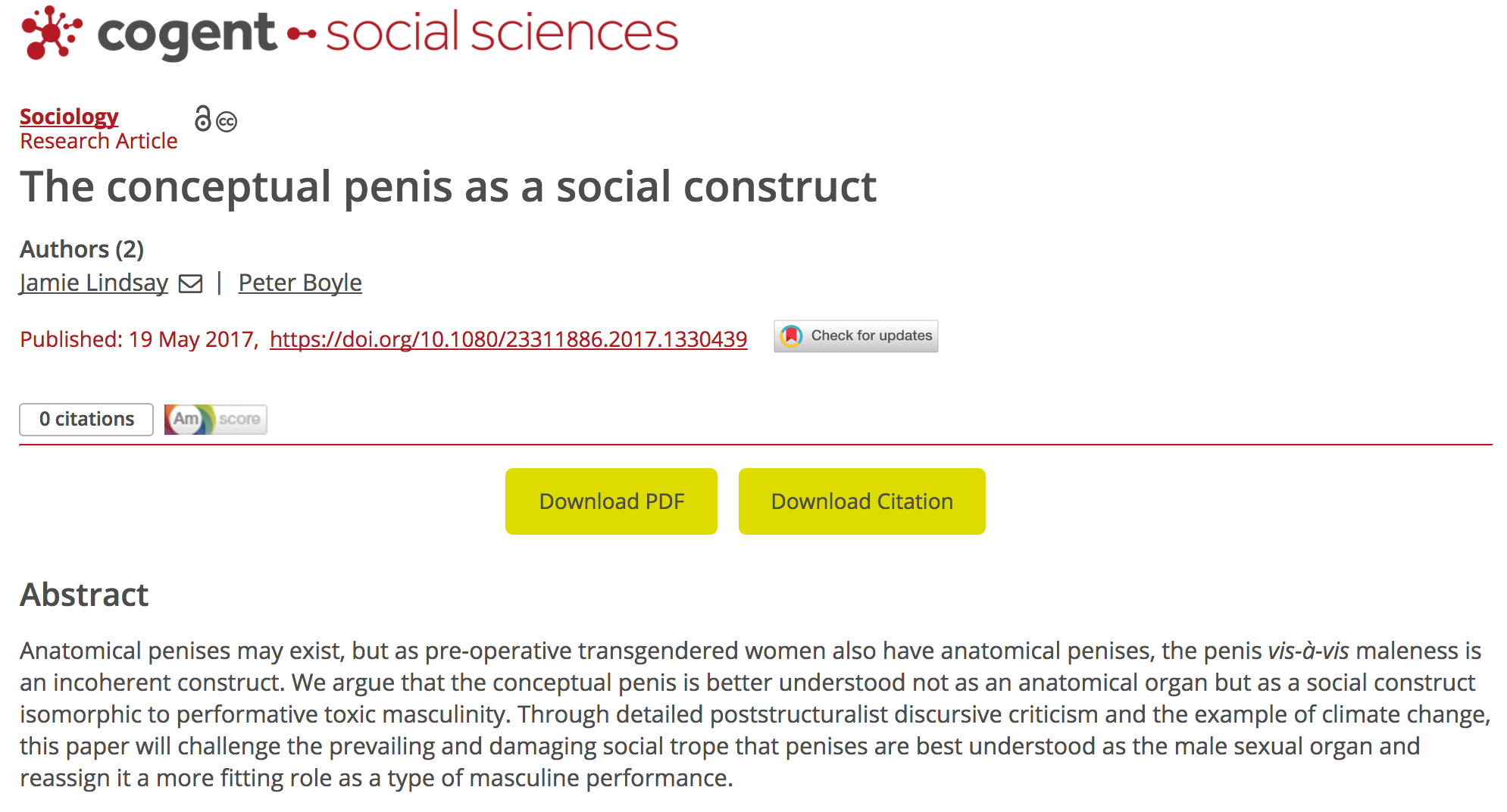NYU physicist Alan Sokal thought very little of the research performed by his colleagues in the social sciences. To prove his point, he wrote a paper that used plenty of trendy buzz words but made absolutely no sense. As he later explained, Dr. Sokal wanted to find out if a humanities journal would "publish an article liberally salted with nonsense if (a) it sounded good and (b) it flattered the editors' ideological preconceptions."
It would. His paper, "Transgressing the Boundaries: Toward a Transformative Hermeneutics of Quantum Gravity," was published in the journal Social Text in 1996, and his hoax has earned him a place in scientific history.
Dr. Sokal inspired copycats. Several years later, according to an MIT news report, three students developed software that "randomly generates nonsensical computer-science papers, complete with realistic-looking graphs, figures, and citations." One of the papers used terms like "Byzantine fault tolerance." It was submitted to -- and accepted by -- a global computer science conference.
One would think that the world of scientific publishing would have learned from these hoaxes. Alas, that does not appear to be the case. Instead, scientific journals have proliferated, making it easier than ever to publish a paper.
The Penis as a Social Construct
A new team of hoaxers has struck again, this time in the journal Cogent Social Sciences1. Even though the authors have already admitted to their hoax in the magazine Skeptic, the journal apparently is unaware. The paper is, for the time being, still available here. (When they finally do take it down, it will live on in infamy here.) Here is a screenshot of the abstract:

The authors begin, "Anatomical penises may exist," but the "conceptual penis is better understood not as an anatomical organ but as a social construct." It goes downhill from there. "There are many women who have penises," they boldly claim. Then, they gratuitously listed some crude synonyms for the penis, such as: "beaver basher," "custard launcher," "pork sword," and "mayo shooting hotdog gun." They explained that "manspreading" -- when a man sits with his legs open -- is "akin to raping the empty space around him."
At this point, it is worth stopping to ponder that this didn't raise any red flags with the editors of the journal. Not only did they think this was perfectly intellectual, publishable material, they praised the authors for their work.
Yet, the absurdity didn't end there. The authors tied everything in to climate change:
Toxic hypermasculinity derives its significance directly from the conceptual penis and applies itself to supporting neocapitalist materialism, which is a fundamental driver of climate change, especially in the rampant use of carbon-emitting fossil fuel technologies and careless domination of virgin natural environments.
In their tell-all article in Skeptic, the authors admit they jammed the paper full of jargon and made it purposefully incoherent. They said, "After completing the paper, we read it carefully to ensure it didn't say anything meaningful, and as neither one of us could determine what it is actually about, we deemed it a success." Finally, they made this particularly damning observation:
We assumed that if we were merely clear in our moral implications that maleness is intrinsically bad and that the penis is somehow at the root of it, we could get the paper published in a respectable journal.
It worked. That's the state of social science in 20172.
Notes
(1) H/T Jerry Coyne
(2) Update (22-May-17 @ 10 pm PT): Some critics have noted that Cogent Social Sciences is not a reputable journal. Thus, the hoaxers should have targeted a better journal. However, it should be noted that there are no prestigious gender studies journals.




